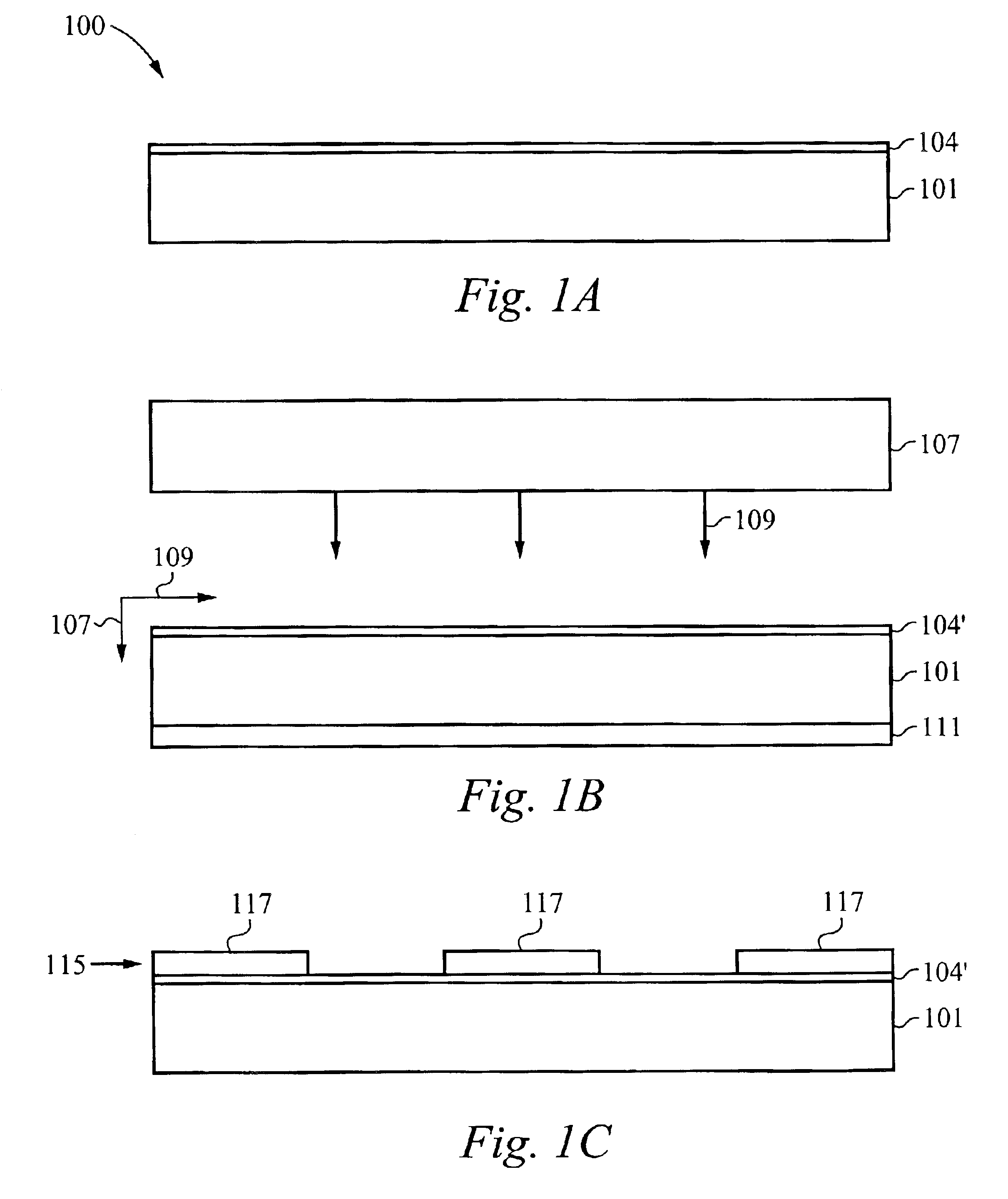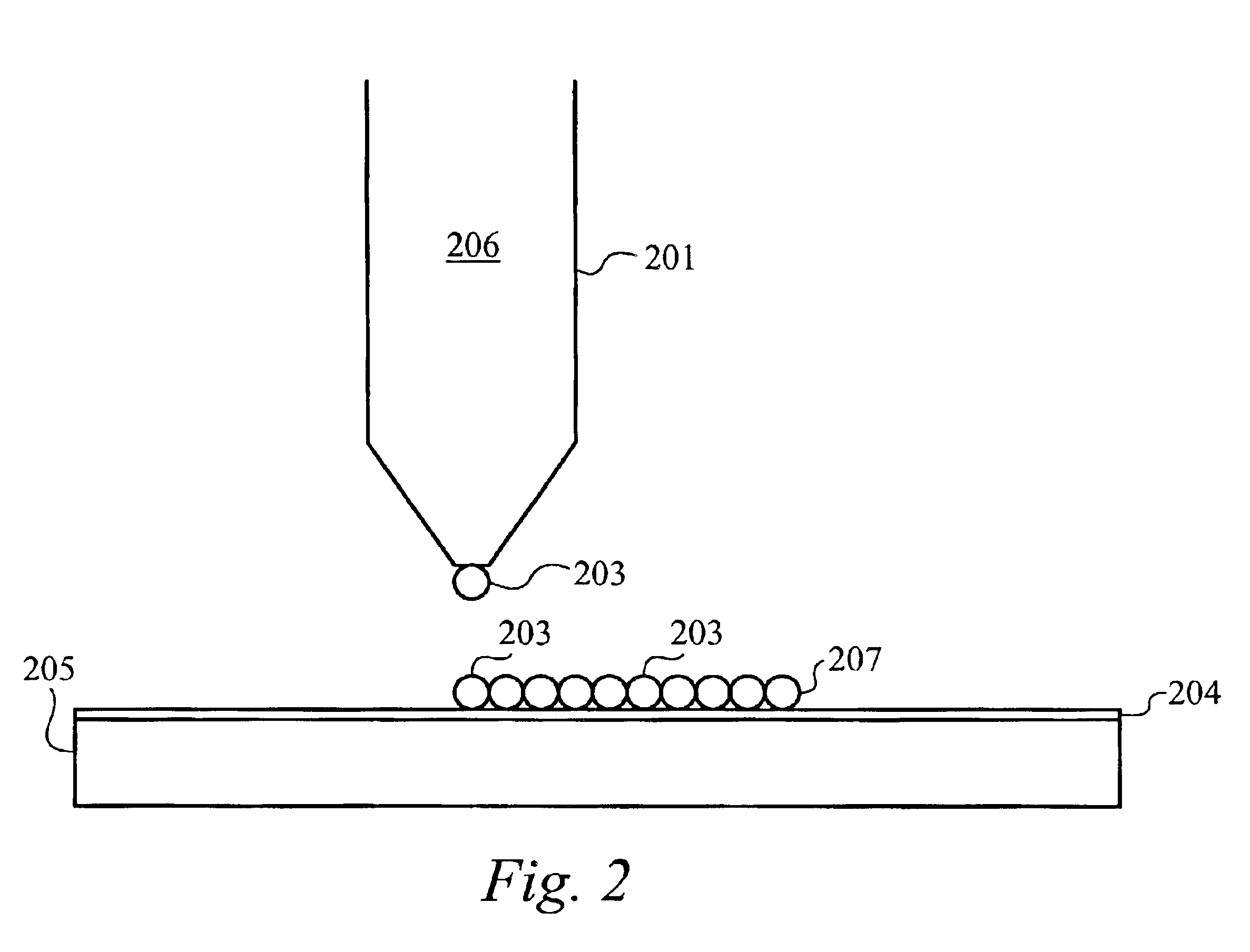Interface layer for the fabrication of electronic devices
a technology of electronic devices and interface layers, applied in the field of interface layers for the fabrication of electronic devices, can solve the problems of poor adhesion of the layer, delaminate from the substrate, irregular formation of hillocks and/or pin holes, etc., and achieve the effect of promoting adhesion of the active device layer
- Summary
- Abstract
- Description
- Claims
- Application Information
AI Technical Summary
Benefits of technology
Problems solved by technology
Method used
Image
Examples
Embodiment Construction
[0020]Referring to FIGS. 1a-b, in accordance with the embodiments of the invention, an interface layer 104′ (FIG. 1b) is formed by depositing a thin layer 104 of material comprising a suitable interface precursor onto a substrate 101. The substrate 101 is a silicon, quartz, glass, polymer, metal, or any other substrate suitable for the application at hand. The thin layer 104 can be deposited onto the substrate 101 using any number of methods including, slide bar coating, ink-jet coating, screen printing, dip coating and vapor deposition methods to name a few. Preferably, the thin layer 104 is deposited on the substrate 101 using spin coating techniques.
[0021]In accordance with the embodiments of the invention, the interface precursor comprises of one or more metals of Pd, Pt, Bi, Pb, Sn, Cu, Ni, W, Al, Cr, Ti, Co, Fe or Mo. The interface precursor is preferably an organometallic complex including, but not limited to metal carboxylates, alkoxides, alkyls, aryls, alkynes, alkenes, β-d...
PUM
 Login to View More
Login to View More Abstract
Description
Claims
Application Information
 Login to View More
Login to View More - R&D
- Intellectual Property
- Life Sciences
- Materials
- Tech Scout
- Unparalleled Data Quality
- Higher Quality Content
- 60% Fewer Hallucinations
Browse by: Latest US Patents, China's latest patents, Technical Efficacy Thesaurus, Application Domain, Technology Topic, Popular Technical Reports.
© 2025 PatSnap. All rights reserved.Legal|Privacy policy|Modern Slavery Act Transparency Statement|Sitemap|About US| Contact US: help@patsnap.com



